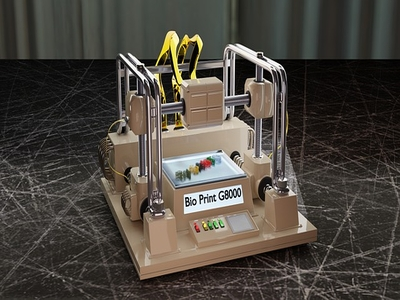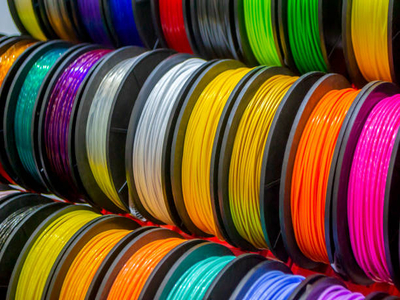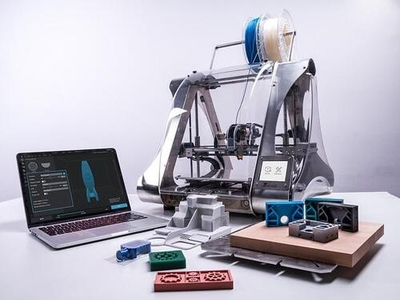How much does filament cost for 3D printing? When you’re looking to start 3D printing, one of the first things you need to figure out is how much filament costs.
Filament is the material used in 3D printing and comes in a variety of colors and types.
The price of filament can vary depending on the type you choose, so it’s important to do your research before buying any.
In this blog post, we’ll discuss the different types of filament, how much they cost and provide tips on how to save money on filament purchases.
Introduction to Filament And How’s Used In Printers

Filament is the key component of a 3D printer and is responsible for converting digital designs into physical objects.
This material is typically made of flexible plastic or resin that melts as the printer builds up each layer of the design from the bottom up.
There are several different types of filament used in various applications and industries.
Each one has its own unique properties that make it suitable for specific types of printers and printing tasks.
For example, high-performance filaments like carbon fiber may be ideal for creating specialized scientific equipment or heavy-duty parts.
Whereas more flexible materials are better suited for prototyping new products without requiring too much precision or fine detail.
Whether you need a tough material for industrial use or just want to test out your latest design idea, the filament is an essential tool in any modern 3D printing process.
Read More: How Dangerous are Resin 3D Printers? Should you be concerned? Resin can be toxic, but how toxic? Here’s what to know.
The different types of filament available on the market today

PLA, ABS, PETG, and Nylon are all popular choices.
PLA
PLA is one of the most commonly used filaments in 3D printing.
Compared to other materials like ABS, PETG, and HIPS, PLA is most commonly used because of its biodegradability and relative affordability.
PLA is made from corn starch and processed into a polymer that is then turned into filament for use in 3D printers.
It can be printed at a variety of temperatures, which makes it a versatile material for creating prototypes, models, or functional parts.
But because it’s naturally derived and produced in an environmentally-friendly way, PLA has become the go-to choice for sustainable designers and manufacturers who want to reduce the impact of their products on the environment.
Overall, PLA is not just the most common type of filament – it is also one of the most versatile and widely-used materials in 3D printing today.
ABS Filament
ABS, or acrylonitrile butadiene styrene, is a commonly used engineering plastic that is strong and durable, making it ideal for many applications.
However, ABS is also made from petroleum and emits toxic fumes when heated.
These fumes can cause health problems, including headaches, nausea, and dizziness. In addition, they can damage the ozone layer and contribute to global warming.
As a result, it’s important to be aware of the dangers of ABS before using it. If possible, choose an alternative material that doesn’t have these negative environmental impacts.
PETG Filament
First and foremost, the PETG synthetic material is extremely strong, making it a great choice for creating durable products that need to withstand lots of wear and tear.
PETG is also typically very easy to work with, making it simple for anyone with basic 3D printing skills to successfully create high-quality prints.
Finally, despite its strength and versatility, PETG does not emit toxic fumes during the printing process.
This makes it a much safer option than other types of plastics or composite materials commonly used in marketplaces.
Overall, whether you’re an experienced maker or just starting out in the world of 3D printing, PETG is a great material to keep on your radar.
Nylon Filament
Nylon is a versatile and highly durable filament that’s often used in industrial applications.
With its high melting point and high tensile strength, nylon can be used for everything from automobile parts to fabric to ropes.
Additionally, due to its flexibility and chemical resistance, nylon is able to withstand a wide variety of temperatures and pressures without breaking or cracking.
Because of its flexibility, it has become one of the most widely used polymers in the world.
Whether you’re looking for a strong replacement cable that can hold heavy loads or simply want a filament that will last throughout the year, nylon is an ideal choice.
Read More: How Long Does 1kg of 3D Printer Filament Last? We discuss how long different filaments last and how you can make your spool go the extra mile!
Breakdown of the Cost of Filament

How much is material for 3D printer applications?
When it comes to filament for 3D printing, there are a variety of different factors that can affect its cost.
The first is the type of material used. As discussed earlier, there are many different options available, such as PLA, ABS, Nylon, and others.
PLA filament is typically one of the cheapest options on the market, while more exotic materials like metal or carbon fiber can be significantly more expensive.
Additionally, some brands may offer lower prices than others due to their purchasing power or level of quality.
Are 3D printers expensive to use? Here’s a breakdown of what influences the costs of 3D printing.
How Much Filament Actually Costs
On average, PLA filament tends to be between $10 and $20 per spool – although this may vary depending on the brand and other factors.
At the higher end of the spectrum, premium filaments like metal or carbon fiber can cost up to $50 or more per spool.
Regardless of which type you choose, however, one thing is clear: with 3D printing becoming more popular by the day, investing in good quality filament has never been more important!
Save money by learning How to Convert Scrap 3D Prints into Filament! If you have enough scraps, it may be worth trying.
Conclusion
In conclusion, the cost of filament for your next project will vary depending on the type and brand of material you choose.
However, depending on the quality of the product – on average, PLA filament tends to be between $0.20 and $0.50 per gram.
If you need dependable performance in your next industrial application, look no further than the versatile and affordable PLA filament. Thanks for reading!
Read More